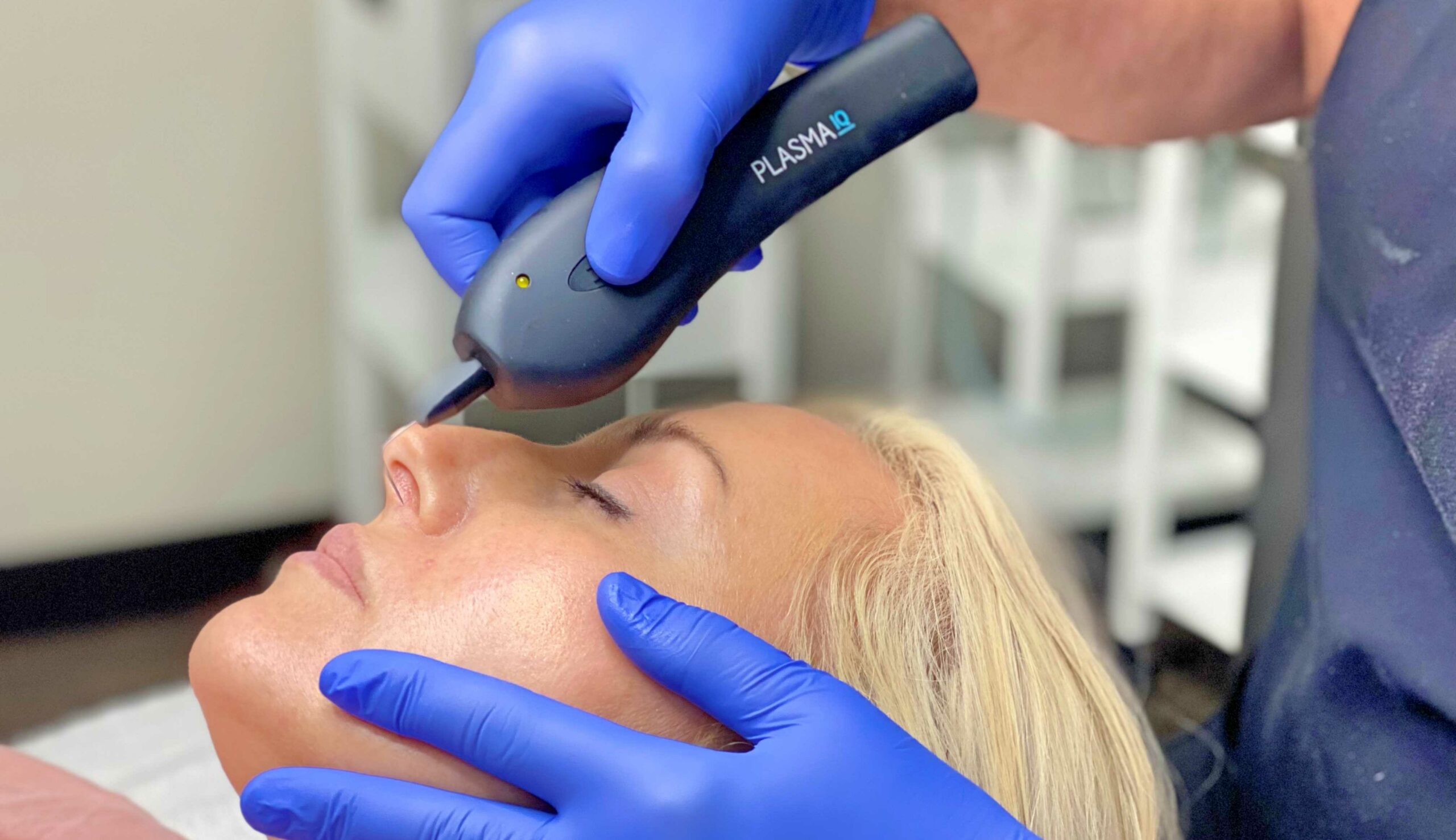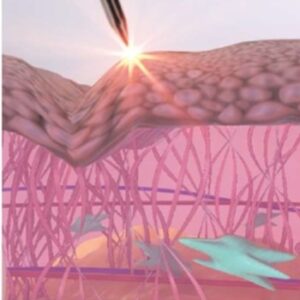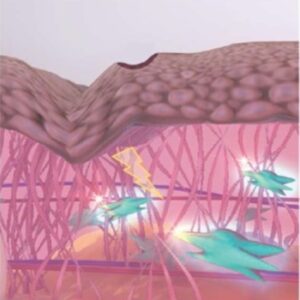
Plasma IQ Fibroblast Treatments
The Plasma IQ plasma pen harnesses the power of plasma energy to trigger epidermal fulguration, resulting in immediate skin reaction and tightening in the treatment area.
Due to the non-surgical micro-injuries sustained during the fibroblast treatment, your skin stimulates fibroblasts within the dermal layer. Active fibroblasts generate new collagen and elastin to renew and restore the skin.
As the plasma pen approaches the skin during treatment, it ionizes gas particles in the air to create an electrical arc between the tip and skin that looks like a spark. The electrical arc causes epidermal fulguration, turning a solid straight into a gas, activating the skin’s natural healing process.
The fibroblast procedure creates tiny brown carbon crusts, or scabs, in the treated area that remain for approximately a week before dropping off.

As the Plasma IQ plasma pen approaches the surface of the skin, it ionizes atmospheric nitrogen gas particles in the air to create a fibroblast plasma arc that looks like a spark.

The heat energy created by the fibroblast plasma arc creates controlled microinjuries to the upper layers of the skin.

This results in tightening and contraction of the skin to restore skin health and regeneration.
What Is The Plasma IQ Plasma Pen Used To Treat?
The Plasma IQ fibroblast treatment is designed to tighten and firm delicate skin on the face with pin-point precision. It is used for:
- Upper and lower eyelid tightening
- Crow’s feet
- Upper and lower lip lines
- Skin tag removal
- Sebaceous Hyperplasia
- Colorless mole removal
What Does The Plasma Pen Feel Like And Are The Fibroblast Treatments Safe?
Local numbing cream is applied for 20 minutes prior to fibroblast treatment to minimize any discomfort and the procedure is then less painful. Fibroblast treatment may feel hot in places and there may be a tingling or burning sensation afterwards.
Plasma IQ pen technology has been used worldwide for several years. There have been occasional reports of temporary post-treatment hyper pigmentation, but no other adverse events have been reported. However, with any procedure involving the skin, there is always the possibility of micro-scars, but this depends on your skin.
What Are The Fibroblast Treatment Side Effects?
The area will often be red and warm immediately after the procedure and can be quite tender for a few days. This is completely normal. Clients may experience a tingling or burning sensation on the first day of treatment as well.
Following your Plasma IQ fibroblast treatment, tiny dark brown/black spots may appear or there may be an appearance more typical of a burn. This is normal.
Significant swelling is completely normal, and you can expect it to last for up to a week. This can be significant around the eyes and may lead to interference with vision initially. Anti-inflammatories and antihistamine medications may help alleviate the swelling.
Crusting (tiny brown/black dots) will usually develop over the treated area and will flake off over the following days. It may take over 2 weeks to completely disappear.
It is important to keep this clean, dry and protected from intense sunlight and other sources of UV light to prevent uneven pigmentation as the treated area recovers. To maximize the effects of your Plasma IQ fibroblast treatment we advise to keep the “crusting” intact for 5-7 days and not rub them off immediately.
During your consultation you will be provided with a copy of the post-care instructions. It is critical that the post-care instructions are followed to allow the fibroblast treatment areas to heal correctly and obtain the best results.
How Many Treatments Will I Need?
Results after Plasma IQ depend on the severity of skin laxity or the size of the lesion. While patients can see improved results after their first treatment, multiple treatments are recommended to obtain and maintain optimal results. We recommend one to three Plasma IQ fibroblast treatments spaced 6-8 weeks apart.
